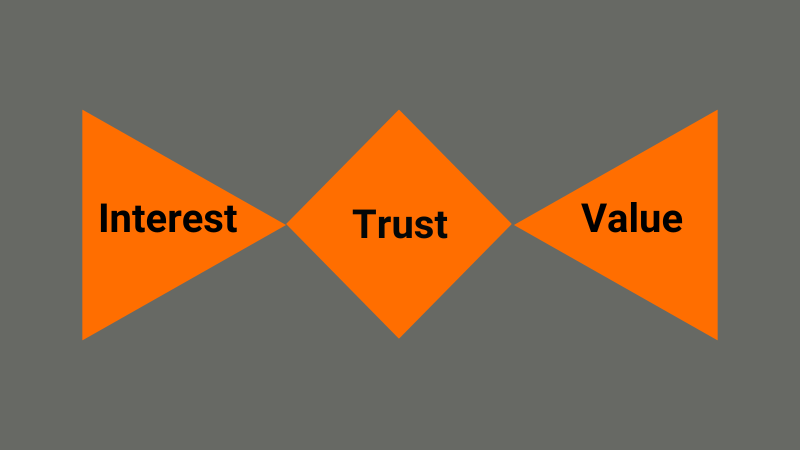Introduction: Why Building Rapport is Essential
The ability to build rapport is the foundation of successful sales. Studies show that 65% of customers say a positive experience with a brand is more influential than advertising. Whether you’re in retail, consulting, or B2B sales, rapport helps you earn trust, create a bond, and close deals more effectively. In this post, we’ll explore practical, lesser-known ways to build rapport quickly, including actionable insights backed by statistics. Let’s dive in.
Key Takeaways
- Active Listening is Essential: Show genuine interest in the customer’s needs.
- Leverage Personalisation: Use tools and techniques to align with their goals.
- Avoid Common Mistakes: Adapt your approach based on the customer’s cues.
- Transition Thoughtfully: Move from rapport to conversion by showcasing value.
Table of Contents
- Introduction: Why Building Rapport is Essential
- The Psychology of Rapport: What Makes it Work
- Key Points on Rapport and Sales Success
- How to Build Rapport in Minutes: Proven Techniques
- Common Mistakes That Hinder Rapport Building
- Closing the Sale: Transitioning from Connection to Conversion
- FAQ’s
- Final Thoughts
The Psychology of Rapport: What Makes it Work
Building rapport taps into fundamental human psychology. It’s about creating a connection through trust, empathy, and shared understanding. When people feel heard and understood, they’re more likely to engage. Pro Tip: According to the Harvard Business Review, 87% of buyers say they would pay more for a superior customer experience. Understanding this mindset is crucial. Rapport isn’t just about being likeable—it’s about aligning with the buyer’s goals and emotions.
Key Points on Rapport and Sales Success
1) Trust Drives Repeat Business: A Salesforce report shows that 78% of customers say trust is the most important reason they stay loyal to a brand. 2) Speed Matters: Sales data from Gong.io reveals that a salesperson has just 7 seconds to make a strong first impression. 3) Personalization Pays Off: According to Accenture, 91% of consumers are more likely to shop with brands that recognize, remember, and provide relevant offers.
How to Build Rapport in Minutes: Proven Techniques
- Active Listening – Active listening is more than just nodding—it’s about demonstrating genuine interest. Use verbal affirmations like “That’s a great point” or “Tell me more about that.”
Pro Tip: Ask open-ended questions to uncover the customer’s pain points. For example: “What challenges are you facing with your current solution?”
This approach establishes trust and shows you’re focused on their needs.
- Mirroring and Matching – People trust those who are like them. Mirroring their tone, body language, or even speech patterns can create subconscious alignment.
How to Mirror: – Match their enthusiasm if they’re excited. – Use similar phrases or jargon to reflect their communication style.
- Leverage Technology to Build Rapport
In today’s digital age, you don’t have to meet face-to-face to build rapport. Tools like video calls, CRM notes, and personalised email campaigns help create connections. Example: Send a quick, personalised video message instead of a generic email. Studies show that video emails increase open rates by 19% and boost reply rates by 65%.
Common Mistakes That Hinder Rapport Building
- Talking Too Much: Rapport is about listening, not dominating the conversation.
- Being Too Formal or Informal: Adjust your tone to suit the client’s communication style.
- Ignoring Non-Verbal Cues: Crossed arms or a lack of eye contact can indicate discomfort. Respond accordingly.
Avoiding these pitfalls ensures your efforts to build rapport remain authentic and effective.
Closing the Sale: Transitioning from Connection to Conversion
Rapport is only the first step. To close the sale, you need to transition from building a connection to demonstrating value.

Use a Collaborative Approach Instead of pushing for a close, involve the customer in the process. For example: Based on what we’ve discussed, does this solution address your key concerns?”
Handle Objections Gracefully Acknowledging their concerns shows empathy and builds trust. Rephrase objections into opportunities: “I understand your hesitation. Let me show you how this can work within your budget.”
FAQ’s
How long does it take to build rapport?
Building rapport can happen in as little as 30 seconds with the right techniques, such as active listening and mirroring. However, deeper connections require consistent effort.
Can you build rapport online?
Yes! Use video calls, personalised emails, and social media interactions to create trust and alignment. Tools like LinkedIn can also help break the ice.
What should I avoid when building rapport?
Avoid over-talking, being overly pushy, or neglecting non-verbal cues. These can break trust and hinder your connection-building efforts.
Final Thoughts
Building rapport quickly is a skill that every salesperson must master. By focusing on active listening, mirroring, and leveraging modern tools, you can create meaningful connections that lead to sales.
Speak soon Len
- Referral Success: The Art of Long-Term Referral Relationship Building - March 19, 2025
- 10 Rules of Referral Marketing - February 26, 2025
- The Power of Referrals: How a Well-Crafted Referral Program Can Skyrocket Your Business - February 16, 2025
